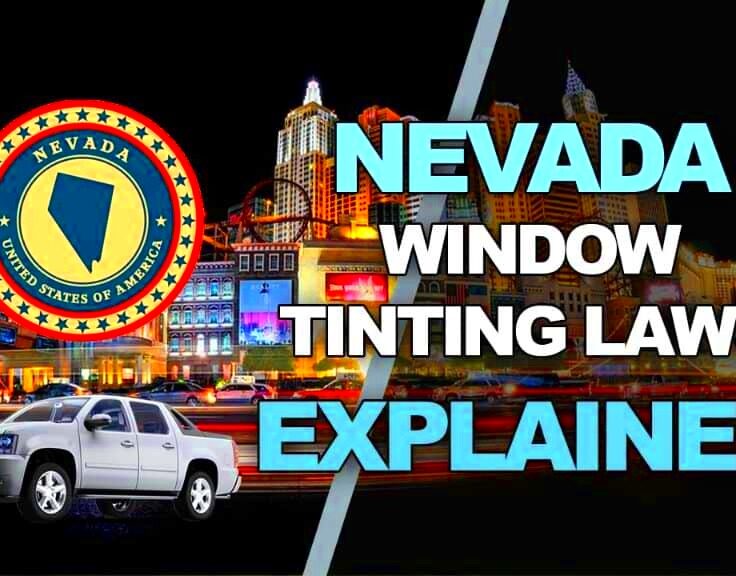Window Tint Laws in Nevada: An Overview
Nevada is a state characterized by bright sunshine and breathtaking views, and this is home to the particular laws that govern window tint in an effort to maintain safety and visibility on that state’s roads. This set of rules strives to harmonize people’s desire for seclusion as well as elegant look with the requirement of seeing clearly by common users as well as police officers on board. In case you are thinking about window tinting on either your new car or upgrade to have it done on an already owned one, it becomes important for you to know these laws.
Key Terms Related to Window Tinting
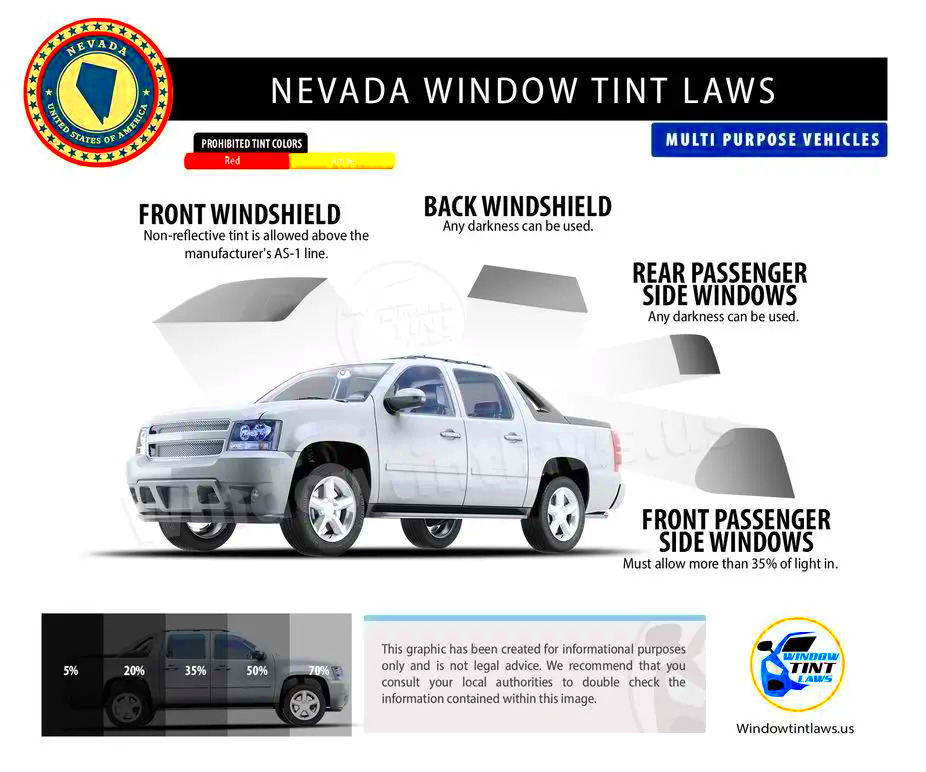
Before we go on the rules and regulations, it’s worth to highlight some important terms that are linked to the tinting of windows:
- Visible Light Transmission (VLT): This percentage measures how much light can pass through the window. The lower the VLT, the darker the tint.
- Reflectivity: This term refers to how much light the tint reflects. Higher reflectivity can reduce glare but may also be subject to stricter regulations.
- Tint Percentage: This indicates the darkness of the film applied to the window.
- Dyed Film: A common type of window tint that offers privacy but can fade over time.
- Metalized Film: Contains metallic particles that can block UV rays and heat but may interfere with electronic signals.
Legal Limits for Window Tint Darkness
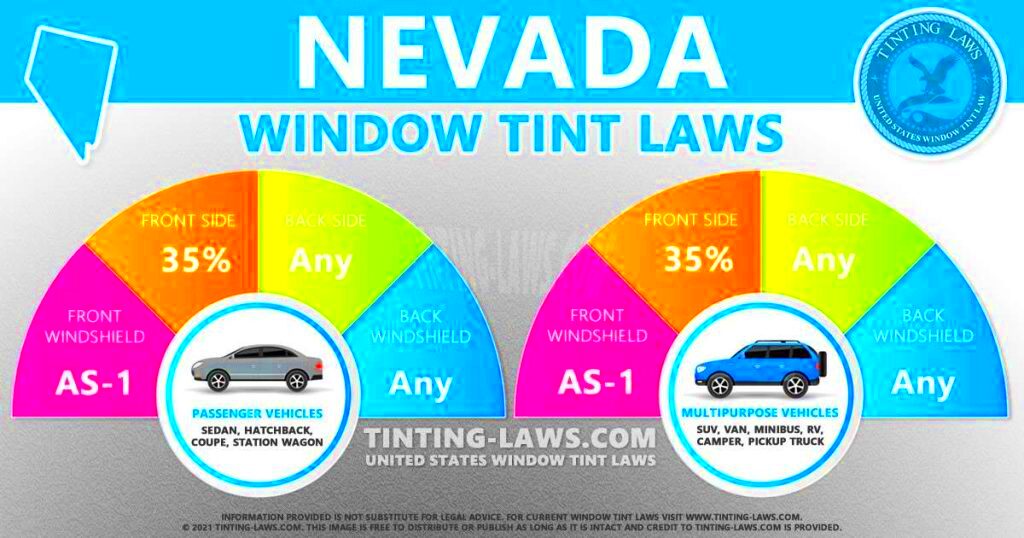
Amongst the states in the United States that set special laws on how dark a window tint can be in relation to its kind of vehicle is Nevada. The following is an explanation:
| Vehicle Type | Front Windshield | Front Side Windows | Back Side Windows | Rear Window |
|---|---|---|---|---|
| Passenger Vehicles | Non-reflective tint allowed above the AS-1 line | 35% VLT or higher | No limit | No limit |
| Multi-Purpose Vehicles (MPVs) | Non-reflective tint allowed above the AS-1 line | 35% VLT or higher | No limit | No limit |
| Trucks | Non-reflective tint allowed above the AS-1 line | 35% VLT or higher | No limit | No limit |
Darker shades are okay for rear windows but they should follow state standards regarding reflectiveness, however, it is worth mentioning. For tinting purposes refer to the most recent guidelines or documentation by a specialist before starting any procedure.
Reflectivity Standards for Window Tint
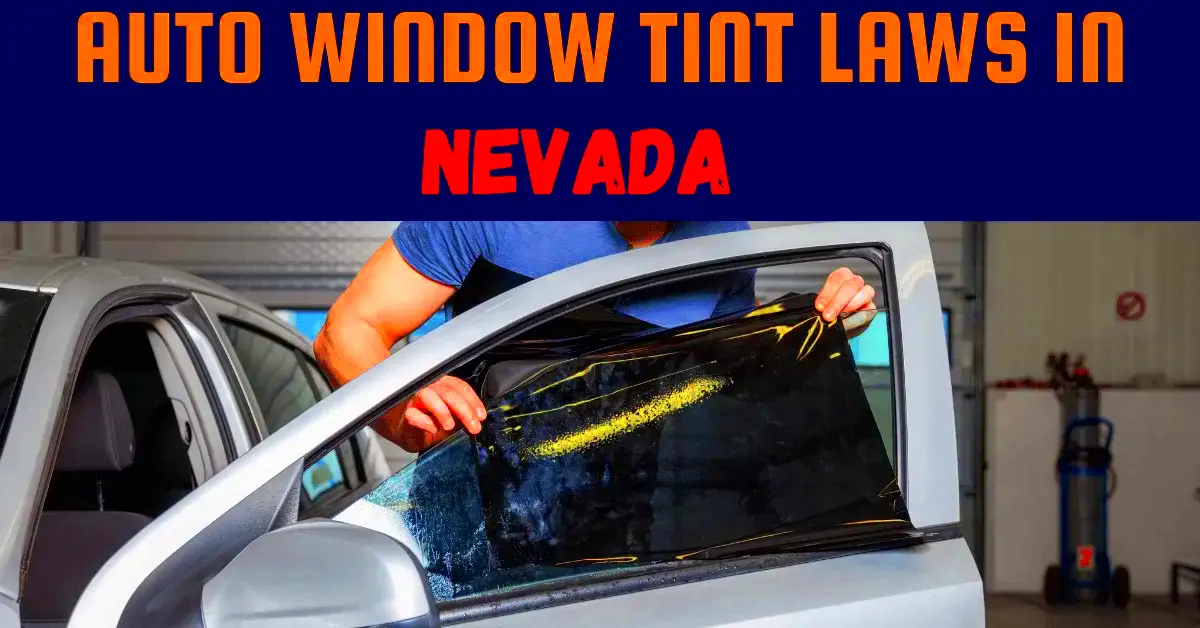
In Nevada, window tinting laws provide for two main things: how dark you can make a tint and how much light should bounce off it. Therefore, window tinting should take into account both darkness and reflectivity. This is important because it helps in keeping drivers from being blinded by their own vehicles and allows them to see well enough while driving.
Nevada reflectivity standards are here to be discussed.
- Front Windshield: No tint that reflects more than 20% of light is allowed on the front windshield.
- Front Side Windows: Reflectivity must not exceed 35%.
- Back Side Windows and Rear Window: There are no specific reflectivity limits for these windows, but drivers should consider how reflective tints may affect visibility and glare.
A strict semblance is given to the regulations although they aim at preserving all those who use the road. In case you ar thinking about window tinting, just remember to look for films that match these reflectivity benchmarks. Not only will it keep your driving within the limits of law, but it will also give you a chance of enjoying a secure and comfortable driving experience.
Exemptions and Special Cases for Window Tint
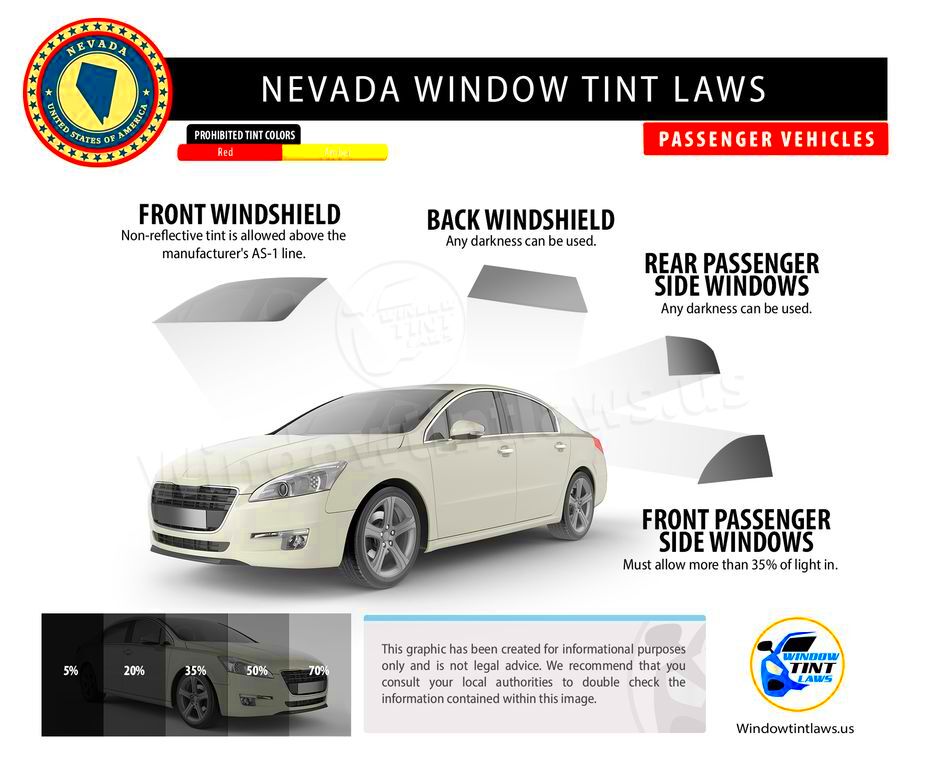
In my own words, however, not all window tinting regulations apply everywhere in Nevada. Knowing when exemptions might apply is useful if you have particular needs or situations. Below are few examples of common exceptions:
- Medical Exemptions: Individuals with specific medical conditions that require reduced sun exposure may apply for a medical exemption. A doctor’s note is typically required.
- Commercial Vehicles: Some commercial vehicles might have different regulations, especially those used for business purposes that require enhanced privacy or protection from the sun.
- Factory Tinted Windows: Windows that come with the vehicle from the manufacturer may not be subject to the same restrictions as aftermarket tints.
When someone believes that they meet the requirements for an exemption, they should have ready documents and consult local police or lawyers to be sure they are on the right track.
Consequences of Violating Window Tint Laws
Disobeying laws about car window tint in Nevada could bring bad effects such as having to pay huge fines and wasting your valuable time. This is what may happen:
- Fines: The state imposes fines for window tint violations. These fines can vary based on the severity of the infraction, but they generally range from $100 to $250.
- Re-tinting Requirements: You may be required to remove or replace non-compliant tinting. This could mean additional costs for removal and a new installation.
- Points on Your Driving Record: Accumulating points for tint violations can lead to increased insurance rates and other penalties.
- Increased Law Enforcement Attention: If you frequently violate tint laws, you may draw the attention of law enforcement, leading to more stops and scrutiny.
Staying up to date with the law and making sure your car follows all tinting regulations is essential in order to avoid such repercussions. A little time and money invested in appropriate tinting can let you escape from future troubles and expenses.
How to Ensure Compliance with Nevada’s Tint Laws
Conforming to the Nevada window tint regulations can help you avoid fines and inconveniences in the future. It may sound intimidating, but if approached correctly, these rules are not too difficult to follow. To make sure your window tint is legal:
- Know the Law: Familiarize yourself with Nevada’s specific window tint regulations regarding darkness and reflectivity. Always check for the latest updates, as laws can change.
- Choose a Reputable Installer: Work with a professional window tinting service that understands the laws. They should offer products that meet legal requirements.
- Ask for Documentation: Request certification or documentation from your installer confirming that the tint complies with state laws. This can be helpful in case you get pulled over.
- Check Tint Percentages: Use a tint meter, which measures visible light transmission (VLT), to ensure your tint meets legal standards. Many installers will provide this service as part of their installation.
- Inspect Your Tint Regularly: Over time, tints can fade or become damaged. Regularly check your tint to ensure it remains compliant.
The tinted window lovers should keep on these steps to stay on floor. This assures that one is free of any chance of being fined, thus promoting driving comfort.
Frequently Asked Questions about Window Tint Laws in Nevada
No doubt you are thinking of tinting your vehicle’s windows; this could lead to the following thoughts; what are the laws governing tinting my car’s windows? In case you want answers to these, below are some frequently asked questions concerning window tint regulations in Nevada that may help:
- What is the darkest legal tint in Nevada? For passenger vehicles, the front side windows must allow at least 35% light transmission.
- Can I have reflective tint on my windows? Yes, but reflectivity cannot exceed 35% on front side windows and 20% on the front windshield.
- Are there any exceptions for certain vehicles? Yes, commercial vehicles and those with medical exemptions can have different tint regulations.
- What happens if I get pulled over for illegal tint? You may receive a fine and could be required to remove the tint.
- Is there a grace period for tint violations? Typically, there is no grace period; it’s best to ensure compliance before installation.
These inquiries may aid in clarifying the rules governing window coloring in the state of Nevada. On the other hand, if your worries are more particular, think about contacting local police or a legal professional.
Conclusion on Window Tint Laws in Nevada
Ensuring that you understand the window tinting laws in Nevada is a must for every motor vehicle owner wishing to improve their driving encounter. Even though the laws might appear tight, they have a reason for being there: ensuring safety and visibility on the roads. You will enjoy having tinted windows without breaking any law if you know about darkness and reflectivity among others places, choose honest tinting experts and keep abreast of exemptions.
By adhering to these regulations, you prevent getting fined and at the same time promote road safety for everyone. Therefore, consider laws before tinting your car windows if you are doing it for privacy, style or heat reduction purposes. Enjoy tinting!
